Birtles and the Bean: London to Melb via Cairo as drive reborn
The epic 24,000 km journey to recreate Francis Birtles’ famous 1927 drive from London to Melbourne in a classic roadster roars through the Egyptian capital to raise funds for Australian charity
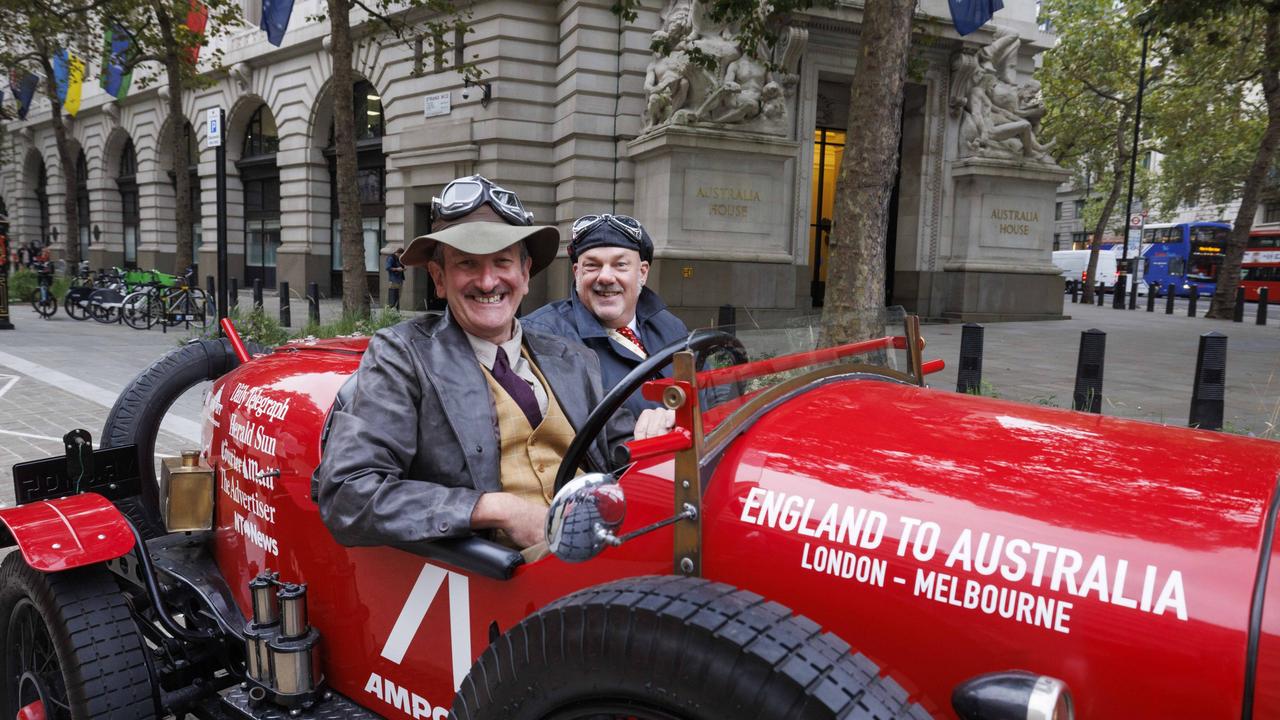
READING LEVEL: GREEN
The second Bean roadster car to ever enter Egypt reached the pyramids in Cairo this week on the latest leg of its epic fundraising journey from London to Melbourne.
It had been a long wait and a mountain of paperwork for the red Bean 14 roadster to be unloaded from the ship in Alexandria* and finally hit the road to the Egyptian capital.
“This is a dream come true,” enthused The Daily Telegraph’s cartoonist Warren Brown as he and this author threaded through the honking horns, auto rickshaws*, battered taxis and wandering dogs of the ancient Egyptian port city.
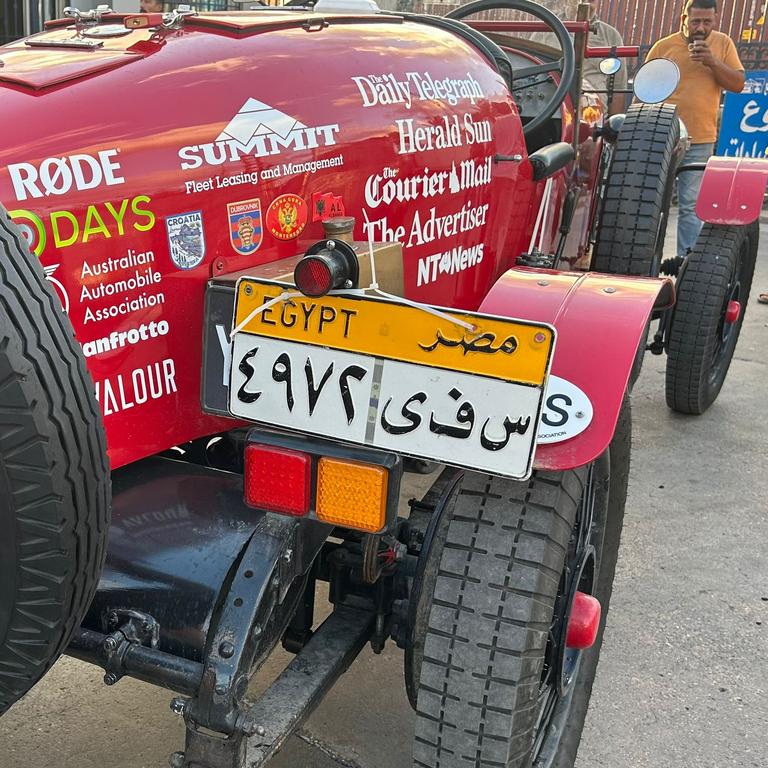
“I have been trying to do this for nearly two decades,” Brown said, as passing motorists gave the thumbs up. “I have wanted to visit Egypt ever since I found a postcard sent from the pyramids by my grandfather when he was here with the Australian Imperial Force in 1915.”
Now that dream is being realised by the recreation of Francis Birtles’ 1927 famous drive from England to Australia in the same model Bean motor car, this time to raise money for the Royal Flying Doctor Service.
It is an epic 26,000 kilometre journey that has so far raised more than $100,000 for the charity.
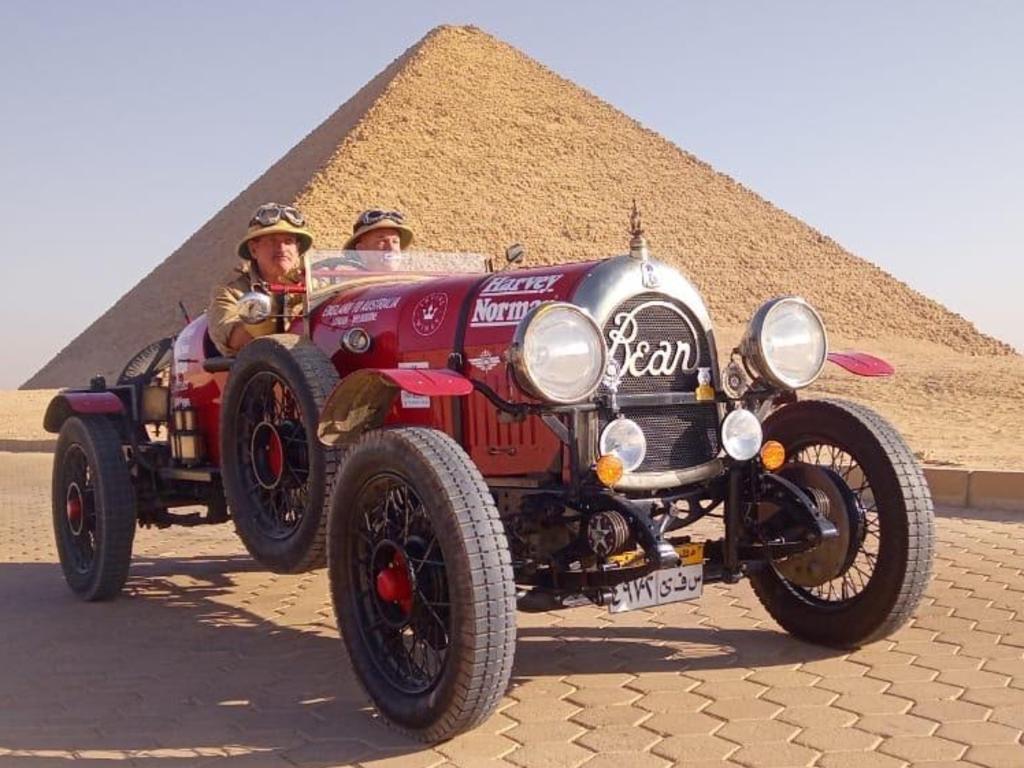
At the Greco Roman museum in Alexandria, the Egyptian media turned out in force, alerted of the car’s arrival by Sydney-based friend of the museum, Prince Lorenzo Montesini.
Museum general manager Dr Wallaa Moustafa was not surprised by the reception and said that “here in Egypt we have a respect for heritage and ancient things.”
The age of the Bean, only the second to reach Egypt since Birtles brought his original car almost 100 years ago, pales into insignificance at the foot of the ancient 5000-year-old pyramids.
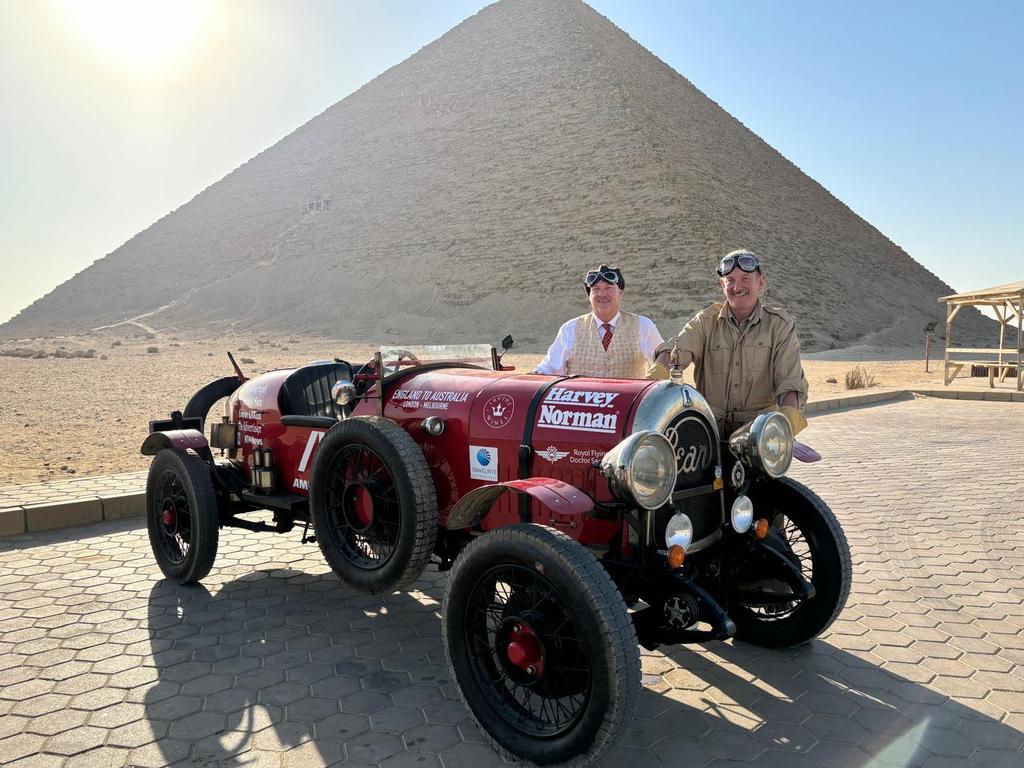
At the Red Pyramid, the third largest in Egypt, the Bean and its drivers – wearing pith helmets* at Brown’s insistence – could easily have time-travelled from a forgotten era of motoring, when everything smelled of hot motor oil and getting behind the wheel was not for the faint-hearted.
That bygone age was marked at a reception for the Bean team at the Automobile and Touring Club of Egypt, which is celebrating its centenary this year.
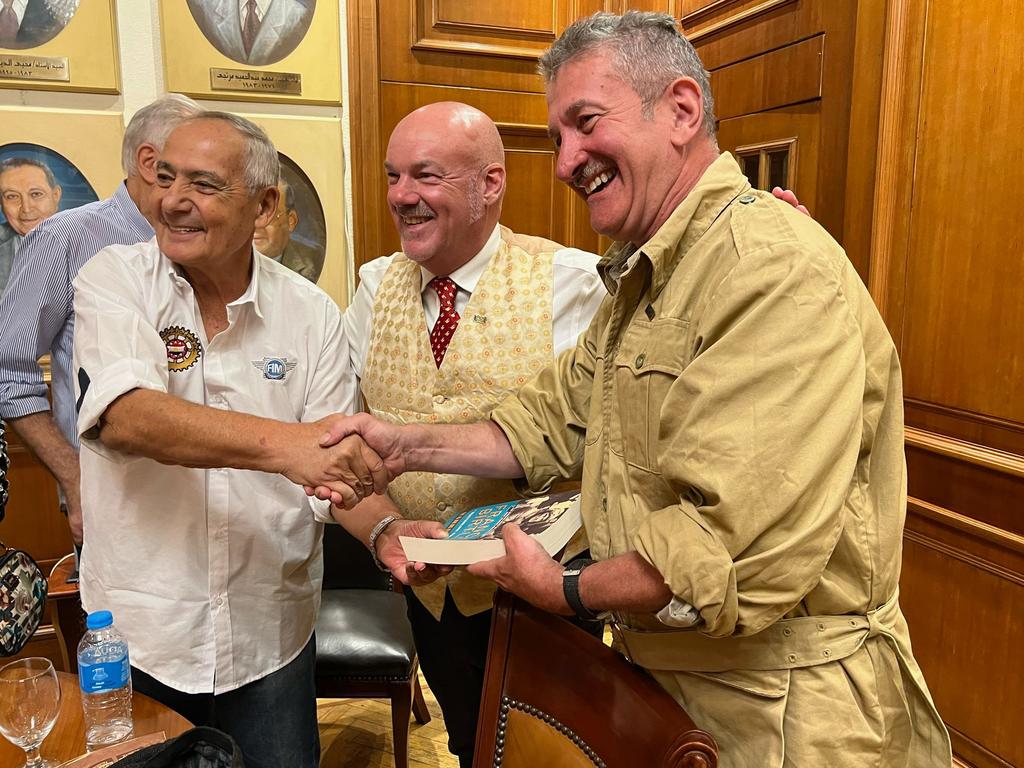
Club vice president Mohamed Askar acknowledged the challenges of driving vintage cars in modern Egyptian traffic, particularly Cairo, a city with a population just shy of Australia’s total, and said it was investing heavily in safety videos.
“It is a bit chaotic,” he said with measured understatement. “We have a very bad safety record.”

In the open-topped Bean, the response from Egyptian motorists has been overwhelmingly positive and friendly. Also alarming, as local drivers simultaneously pip their horns, give the thumbs up and swerve closer to capture footage of the Bean on their phones.
“Even in a new car you have to be very careful on the roads here,” Mr Askar said. “It will be a challenge in a 100-year-old car with old-fashioned brakes.”
But the sands of Egypt are now in the rearview mirror as the car heads next for the pirate-infested Red Sea.
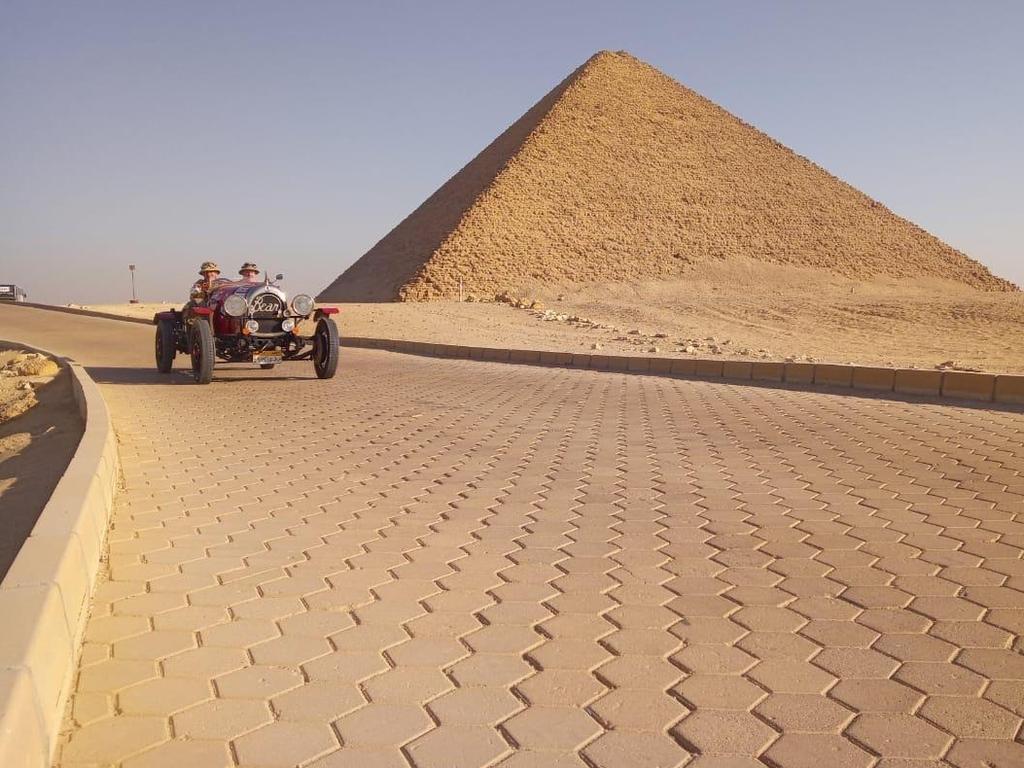
TIME-TRAVELLING ADVENTURERS SET OFF
In 1927, famous Australian adventurer Francis Birtles set off on an epic nine-month drive from London to Melbourne in a 14 horsepower* “Bean*” open top sports car.
Now, almost 100 years later, The Daily Telegraph cartoonist Warren Brown and editor-at-large Matthew Benns are recreating Birtles’ historic drive in the same model car.
King Charles sent his warmest good wishes to the pair as they set off from Australia House* in London on Friday.
The adventurers were farewelled by Australian Deputy High Commissioner Elisabeth Bowes for the 24,000 km drive in a 100-year-old Bean 14.
The endeavour aims to raise money for the Royal Flying Doctor Service* (RFDS), which has King Charles as its patron*.
RFDS Friends in the UK chair Peter Box said the monarch had been kept updated on the adventure.
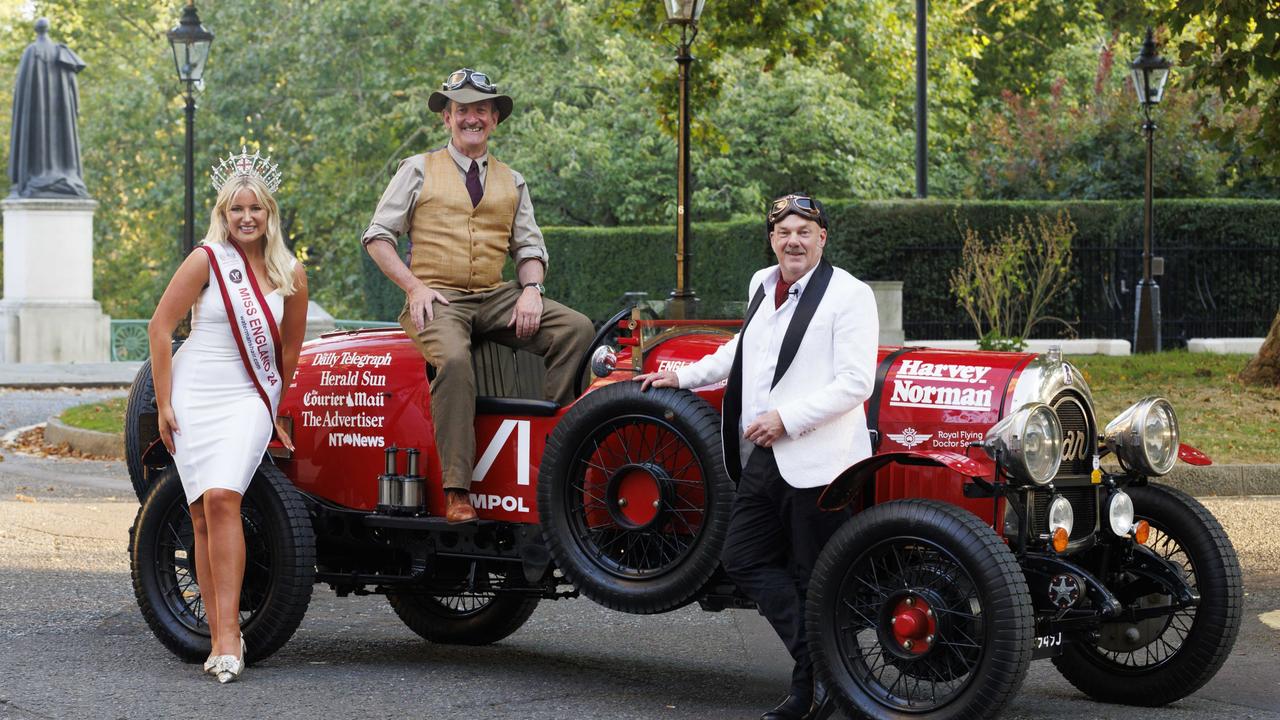
“The King asked me to pass on to the intrepid duo* his warmest good wishes for the adventure and his hope that everyone had a good time,” he said.
Almost one century ago, Birtles was waved off by Miss Australia 1927 Phylis Von Alwyn. On Friday morning, Miss England and classic car enthusiast Milla Magee drove up from Cornwall to perform the same duty for Brown and Benns.
“I think this is a fantastic opportunity for everyone to come together and relive history,” Ms Magee said. “My grandfather was a Spitfire* pilot who always had classic cars and that love of cars has been passed on to me. This is an amazing motoring adventure for a good cause and I am really quite jealous that I can’t go along.”
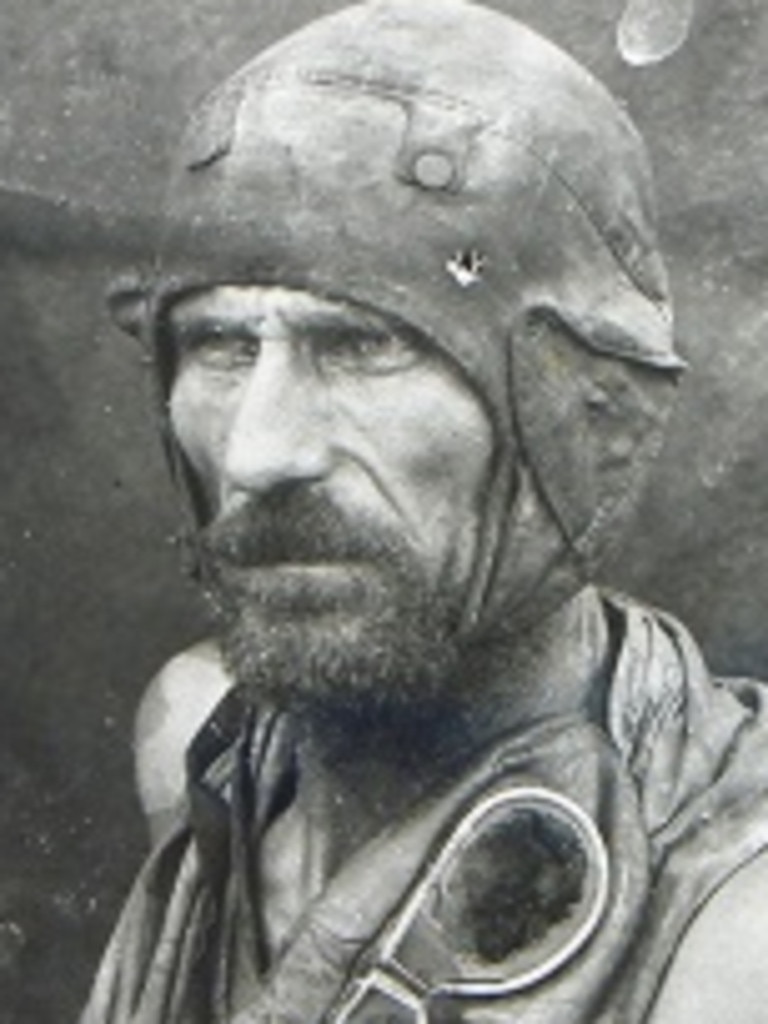

Back in the 1920s, Birtles’ name was a byword* for adventure to Aussies, just as Don Bradman was for cricket or Phar Lap for horse racing. He hatched the plan to drive from London to Melbourne with Daily Telegraph’s senior correspondent at the time, Malcolm Ellis.
The pair were joined by WWI war hero Billy Knowles in a transcontinental* attempt that was disaster-prone from start to finish. The trio headed off through the worst winter Europe had seen in 40 years, their car constantly breaking down, before the three were arrested as spies in Turkey. The Bean gave up the ghost altogether in India and the journey came to an abrupt end.
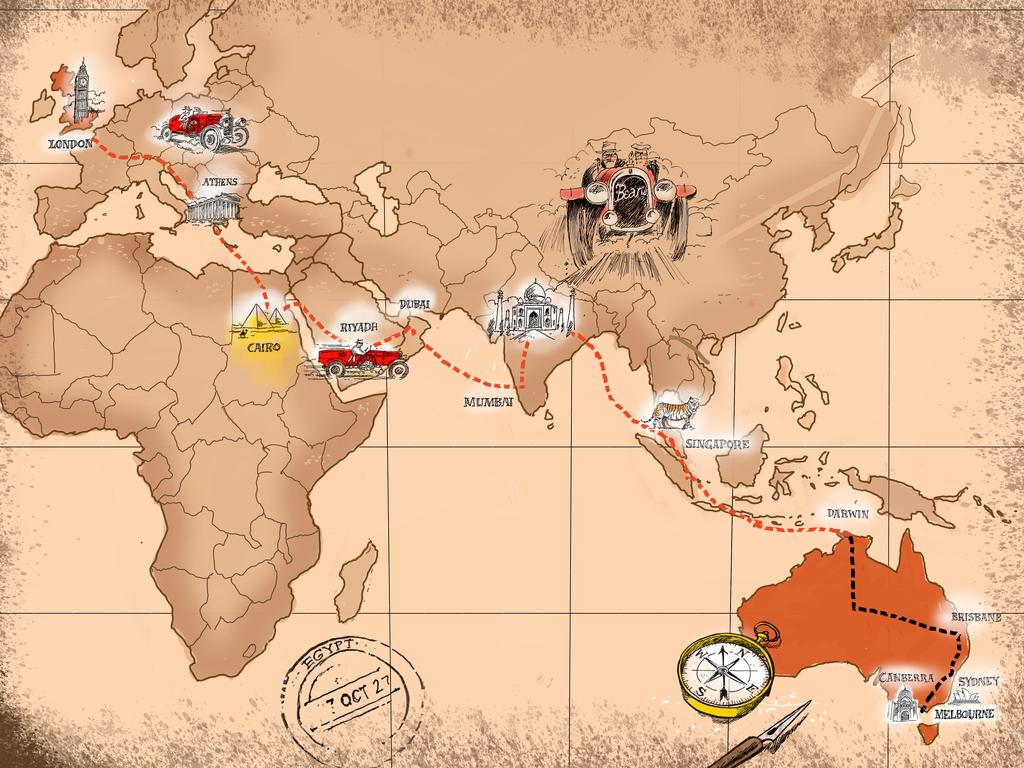
While Mr Ellis returned to Australia in seriously poor health, the unfazed Birtles sailed from India to England where he picked up the two-seater Bean car he’d used to win the Darwin to Melbourne speed record – a car now known as The Sundowner – and set off for another attempt by himself, determined to make it happen with the idea that it would bring Australia and England closer together. His solo attempt was successful.
Even though it was a long time ago, Birtles’ world had quite a lot in common with our own. At the time of his journey, Australia was in the aftermath of the Spanish flu global pandemic. There was also war in the east, the rise of radical right* politics in Europe and a looming depression* – all things the world is either grappling with or threatened by again.
Brown and Benns will follow the spirit of Birtles’ route, crossing Europe, taking a ferry from Greece to Alexandria in Egypt and driving past the pyramids before tackling the sands of the Saudi desert.

Thanks to the wonders of 21st century technology, this time around, Daily Telegraph readers will be able to follow the journey in real time via a digital map as the pair put the 100-year-old car through its paces on the teeming roads of India and Asia before reaching Singapore for a slow boat to Darwin.
The trip across the island continent of Australia will be an epic drive in itself, traversing from Darwin to Melbourne via Tennant Creek, Brisbane and Sydney. They will be stopping to refill the sunscreen, thanks to a car that has no roof, windows or doors.
The journey has been tipped to take more than three months – nowhere near as long as the original nine-month quest when roads were scarce and ferry systems weren’t as advanced.
Premier Chris Minns unveiled the challenge in November at a launch at The Royal Automobile Club in Sydney and clearly understood the madcap adventure behind the challenge.
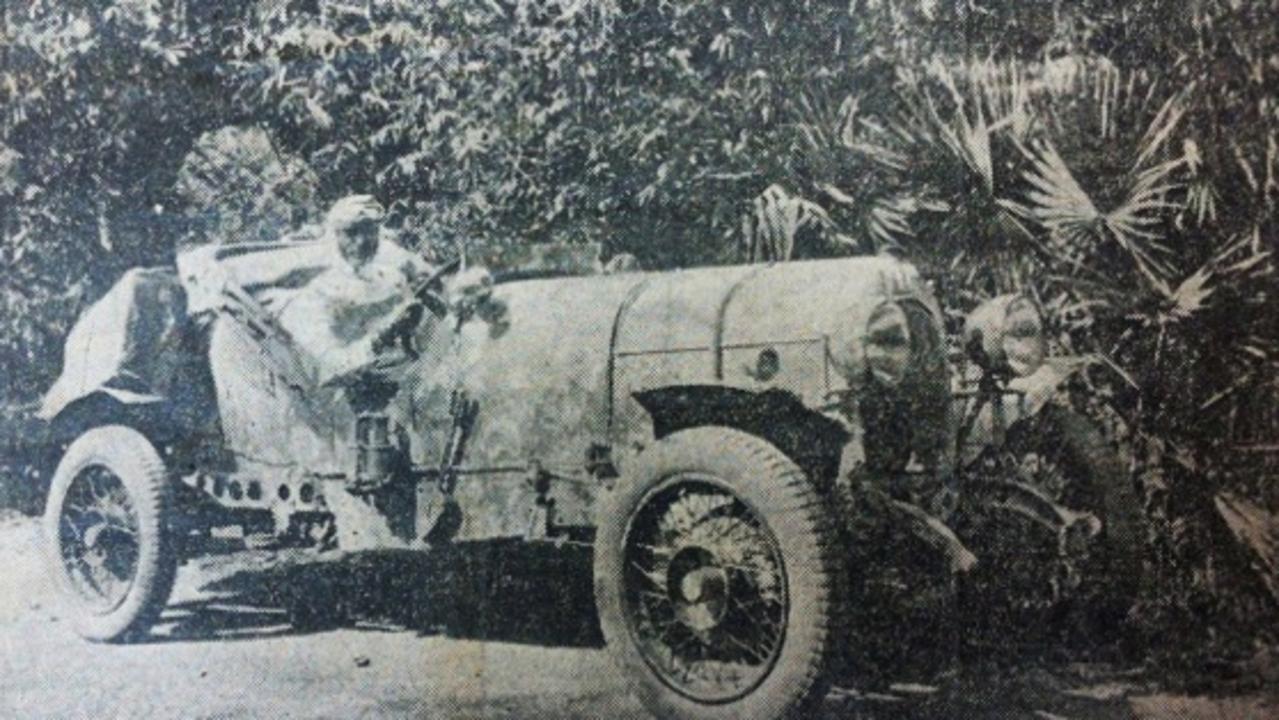
“This recreates the epic journey of a great Australian adventurer,” Mr Minns said. “It raises money for a fantastic cause, the Royal Flying Doctor Service. It is an honour to be there at the very start. Warren Brown is a danger man, I cannot wait to catch up with them again for, in my case, a non-alcoholic beer when they get back.”
Brown said the trip – proudly supported by Harvey Norman – was the culmination* of almost two decades’ work that included him writing a book on the life and adventures of Birtles.
“This adventure celebrates so many things – the amazing bond between Australia and Great Britain – the resourcefulness of those amazing outback pioneers like Francis Birtles – and of course that uniquely Australian institution the Royal Flying Doctor Service,” Brown said.
POLL
GLOSSARY
- Alexandria: second largest city in Egypt, seaport on the Nile delta, home to one of the world’s most famous libraries
- rickshaws: small, covered passenger vehicle with two wheels, usually pulled by one person
- pith helmets: large, hard, white hat worn to give protection from the sun. It was worn in the past by Europeans who were in hot countries
- horsepower: a unit of measurement representing how much power an engine has. Modern cars have around 180 horse power, so the 14 horsepower Bean is nowhere near as powerful as what we are used to travelling in today
- Bean: a brand of car made in England by A Harper Sons & Bean, Ltd in the 1920s before the company ran into financial difficulties and was sold to Hadfields Limited in 1926, before the company stopped making cars in 1929
- Australia House: the oldest Australian diplomatic mission, located in the Strand, London
- Royal Flying Doctor Service: a national charity that provides medical services to people living in remote regional areas in Australia
- patron: a person who gives financial support to an organisation
- intrepid duo: fearless pair
- Spitfire: a single seat fighter plane used by the British air force in WWII
- byword: a person or thing that has to come to represent a sport or certain quality
- transcontinental: across more than one continent
- radical right: a political preference that leans towards ultra conservatism, nationalism and is often against immigration and liberal democracy
- depression: when a country is dealing with a serious economic downturn, where business slows and many people lose their jobs
- culmination: the highest point or greatest achievement after many years of working towards something
EXTRA READING
Kids hit cruise control in future cars
Second gold rush on Oz horizon
Letters worth writing home about
QUICK QUIZ
- What year did adventurer Francis Birtles set off on his epic drive from London to Melbourne?
- What did he hope to achieve by doing so?
- What pandemic was Australia recovering from at the time?
- Which charity are Benns and Brown raising money for by recreating the historic tour?
- How will the pair travel between Singapore and Darwin?
LISTEN TO THE UPDATE
LISTEN TO THIS STORY
CLASSROOM ACTIVITIES
1. Where do you want to go?
In the story, Warren Brown said that driving the Bean in Egypt is a dream come true. Where in the world do you dream of travelling to? Write a story about the place you would love to go to and why it would be so special for you.
Time: allow at least 20 minutes to complete this activity
Curriculum Links: English
2. Extension
Did you know that there is a pyramid called the Bent Pyramid? Use your research skills to find out more about this pyramid. Use the information that you have found to write an explanation of how and why this pyramid got its name and what it tells us about the amazing skills and knowledge of the Ancient Egyptians.
Time: allow at least 60 minutes to complete this activity
Curriculum Links: English, History
2. Bywords
A byword is a person or thing that is very closely connected with a particular quality. An example they used in the article was like Phar Lap is to racing.
Work with a partner to come up with five of your own bywords that associate a person or thing linked very closely to a sport, food or something else.
–
–
–
–
–
Time: allow 15 minutes to complete this activity
Curriculum Links: English, Personal and Social, Critical and Creative Thinking
2. Extension
If you could plan an adventure such as this, what would it be?
Write an outline for a trip of a lifetime you could do with a family member or friend?
Time: allow 25 minutes to complete this activity
Curriculum Links: English, Personal and Social, Critical and Creative Thinking
VCOP ACTIVITY
Imaginative dialogue
Imagine you were there during the event being discussed in the article, or for the interview.
Create a conversation between two characters from the article – you may need or want to include yourself as one of the characters. Don’t forget to try to use facts and details from the article to help make your dialogue as realistic as possible.
Go through your writing and highlight any punctuation you have used in green. Make sure you carefully check the punctuation used for the dialogue and ensure you have opened and closed the speaking in the correct places.

